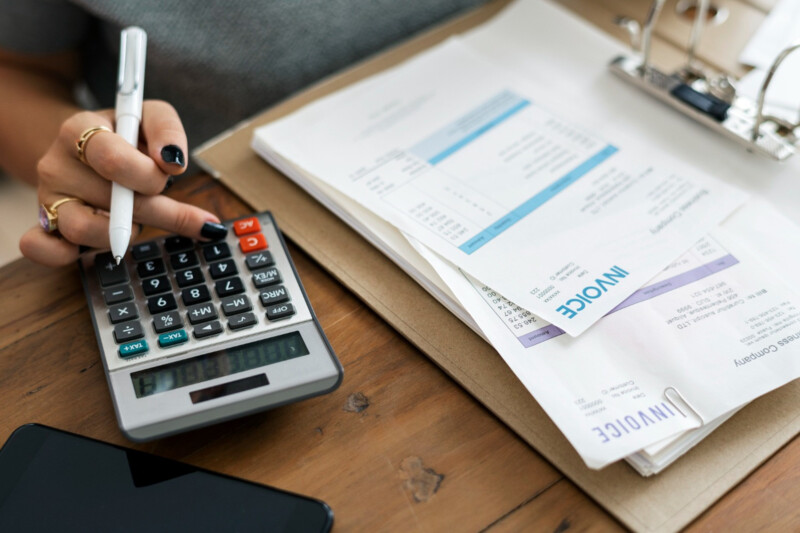En tant que micro-entrepreneur, vous profitez du régime de franchise en base de TVA, ce qui signifie que vous n’avez pas à facturer la TVA à vos clients et que vous ne pouvez pas non plus la récupérer sur vos dépenses. D’ailleurs, vous avez l’obligation d’inclure la mention « TVA non applicable, art.293B du CGI » sur vos factures pour informer vos clients.
Cependant, il est important de savoir que vous pourriez devoir collecter la TVA dans certaines situations, même sans opter pour le régime réel d’imposition. Nous vous expliquons quand cela peut se produire et comment procéder dans ce cas particulier.

Quand perdez-vous le bénéfice de la franchise en base de TVA ?
Avant 2018, toutes les micro-entreprises bénéficiaient automatiquement de l’exonération de TVA. Depuis, la réglementation a quelque peu changé, limitant cette exonération aux micro-entrepreneurs dont le chiffre d’affaires ne dépasse pas certains seuils, qui varient en fonction de l’activité exercée.
En réalité, il existe 2 seuils :
- Le seuil de base
- Le seuil majoré
Le plafond à ne pas dépasser dépend aussi de l’activité exercée :
- Activités de vente de biens : le seuil de base est fixé à 91 900 € et le seuil majoré à 101 000 € ;
- Activités artisanales et libérales : le seuil de base est de 36 800 € et le seuil majoré de 39 100 €.
Prenons le cas d’un artisan auto-entrepreneur. S’il génère un chiffre d’affaires de 28 000 € annuel, il est exonéré de la TVA. S’il génère un CA de 38 000 €, il est aussi exonéré sauf s’il a dépassé le seuil de base pour la deuxième fois consécutive. Dans ce cas, il devra facturer la TVA à partir du 1er janvier de l’année suivante. Enfin, si son CA dépasse le seuil majoré, il doit facturer la TVA dès le mois suivant le dépassement ainsi que l’année suivante.
En résumé, trois situations peuvent vous faire perdre le bénéfice de la franchise en base de TVA :
- Le dépassement du seuil de base pendant deux années consécutives,
- Le dépassement du seuil majoré en cours d’année,
- Le passage du régime fiscal simplifié au régime du bénéfice réel simplifié ou de la déclaration contrôlée.
Dès que votre situation ne vous permet plus d’être exonéré de la TVA, vous devez en informer votre centre des impôts.
Facturation de la TVA à vos clients
Pour facturer la TVA à vos clients, vous devrez apporter quelques modifications à vos factures. Tout d’abord, retirez la mention « TVA non applicable, article 293B du CGI » et ajoutez votre numéro de TVA, que vous pouvez obtenir en contactant le service des impôts des entreprises (SIE) du lieu où se situe votre entreprise.
Ensuite, la présentation de votre facture change. Elle doit maintenant inclure les 4 éléments suivants :
- Le montant des ventes et des prestations HT ;
- Le taux de TVA ;
- Le montant de la TVA ;
- Le montant TTC
Le calcul à effectuer est le suivant : HT + TVA = TTC.
En France, il existe 4 taux de TVA applicables aux montants HT :
- Le taux normal de 20 % qui s’applique à la majorité des biens et services ;
- Le taux intermédiaire de 10 % qui concerne notamment les produits agricoles non transformés, les travaux d’amélioration du logement, certaines prestations d’hébergement, la restauration et le transport des voyageurs ;
- Le taux réduit de 5,5 % applicable aux produits alimentaires, aux livres, aux abonnements gaz et électricité, à la billetterie de cinéma…
- Le taux particulier de 2,1 % principalement réservé aux médicaments.
Les formalités liées à la facturation de la TVA
Comme vous le savez, la TVA est un impôt indirect qui repose entièrement sur le consommateur final. Les entreprises, quant à elles, agissent comme des collecteurs intermédiaires de cette taxe, qu’elles doivent ensuite reverser à l’État par le biais de déclarations régulières.
La déclaration de TVA doit être complétée chaque mois ou trimestre, selon que vous optiez pour le régime réel normal, ou chaque année si vous préférez le régime réel simplifié.
Dans cette déclaration, vous indiquerez le montant total de la TVA que vous avez facturée à vos clients, ainsi que le montant total de la TVA que vous avez payée lors de vos achats au cours de la période concernée. La différence entre la TVA collectée (celle que vous avez facturée) et la TVA déductible (celle que vous avez réglée) représente la TVA due, qui doit être reversée à l’État.
Il peut arriver que vos dépenses dépassent momentanément vos recettes. Dans ce cas, la TVA déductible sera supérieure à la TVA collectée et vous bénéficierez d’un crédit de TVA. Un remboursement de TVA est même possible, sous réserve d’en faire la demande.
Il convient de noter qu’en cas de vente de produits ou de services à l’intérieur de l’Union européenne, même si vous n’êtes pas tenu de verser la TVA, il est impératif de disposer d’un numéro de TVA intracommunautaire.
